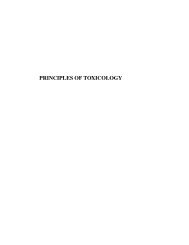Insect-pests - Biology East Borneo
Insect-pests - Biology East Borneo
Insect-pests - Biology East Borneo
You also want an ePaper? Increase the reach of your titles
YUMPU automatically turns print PDFs into web optimized ePapers that Google loves.
24 <strong>Insect</strong> Pests and Diseases of Major Plantation Species<br />
dipterocarps have been planted for a longer period. An<br />
exception is Shorea robusta (sal) in India, where<br />
devastating outbreaks of a borer, Hoplocerambyx<br />
spinicornis (Coleoptera, Cerambycidae) have<br />
occurred periodically in northern latitudes (Roonwal<br />
1978). There was a large outbreak of a hairy<br />
caterpillar in over 12 000 ha of natural peat swamp<br />
forest of Shorea albida in Sarawak and Brunei during<br />
the 1950s (Anderson 1961). This may be an<br />
exceptional situation but details are sketchy. While<br />
there is no indication of any serious emerging pest<br />
problem in dipterocarps, the situation needs<br />
monitoring. In general, the resin present in<br />
dipterocarps may afford protection against insects.<br />
Diseases do not seem to be a major threat.<br />
4.8. Dyera spp.<br />
Indonesian common name: Jelutung<br />
At least three species of Dyera (Apocynaceae):<br />
D. costulata, D. polyphylla and D. lowii occur in<br />
Indonesia (Whitten et al. 1987; Kessler and Sidiyasa<br />
1994). In Kalimantan, D. costulata and D. polyphylla<br />
occur in lowland swamp forests and they have been<br />
tapped for latex and their soft timber used for<br />
manufacturing plywood, toys, boards, etc.<br />
Plantations of Dyera spp. are being established South<br />
Kalimantan and Jambi provinces.<br />
<strong>Insect</strong> <strong>pests</strong><br />
No information is available.<br />
Diseases<br />
No information is available except for the occurrence<br />
of sapstain fungi on freshly cut logs (Martono 1989).<br />
Threat assessment<br />
Little information is available from other countries.<br />
In Malaysia, where there are trial plantations of<br />
D. costulata (Appanah and Weinland 1993), seeds<br />
were damaged by ants (Duncan 1977) but no major<br />
<strong>pests</strong> recorded. The timber is susceptible to damage<br />
by powder-post beetles. It appears that there is no<br />
major threat of <strong>pests</strong> and diseases for plantations of<br />
Dyera spp. Perhaps the latex affords protection as it<br />
does in most other Apocyanaceae.<br />
4.9. Eucalyptus spp.<br />
Indonesian common names: Empupu, Leda,<br />
Ekaliptus<br />
As in many tropical countries, Eucalyptus spp.<br />
(Myrtaceae) have been planted over large areas in<br />
Indonesia for pulpwood production. The main species<br />
planted are E. deglupta and E. urophylla, which are<br />
native to Indonesia although their natural distribution<br />
is in the eastern islands. Many other species have been<br />
tried in small-scale experimental plantations, notably,<br />
E. camaldulensis, E. grandis, E. pellita, E. tereticornis<br />
and E. torelliana. Most plantations are in Sumatra<br />
(Aceh, North Sumatra, Jambi) and Kalimantan (West,<br />
<strong>East</strong> and South Kalimantan).<br />
<strong>Insect</strong> <strong>pests</strong><br />
In the nursery, eucalypt seedlings may be attacked by<br />
several insects, including a pyralid leaf roller (probably<br />
Archips micaceana), the jassid bug, Kolla bataviae, the<br />
curculionid shoot borer, Alcides sp. and the teamosquito<br />
bug, Helopeltis spp. (Table 4.5) (Hardi 1993;<br />
Rachmatsyah and Haneda 1998). Generally, they have<br />
not posed a major threat, and chemical control methods<br />
have been tested (Hardi 1993). Transplanted saplings<br />
are attacked, particularly during the field establishment<br />
phase, by species of subterranean termites that often<br />
cause substantial mortality unless prophylactic chemical<br />
protection is given (Intari and Natawiria 1976; Selander<br />
1990; Santoso and Hardi 1991). Older plants are<br />
attacked by Helopeltis spp., which cause dieback of<br />
young shoots and are a serious pest in North Sumatra<br />
where up to 57% of trees may be infested (Hardi and<br />
Intari 1990). Saplings are attacked by Zeuzera coffeae<br />
(Lepidoptera, Cossidae), which bore into the stem and<br />
often cause it to break; Suratmo (1996) reported that<br />
12-30% of saplings might be infested in Sumatra and<br />
Kalimantan. Recently, an unidentified borer killed 1000<br />
ha of 2-3-year-old E. deglupta plantation of PT. Hutan<br />
Kusuma (Soepangkat 1998). Most probably, this<br />
damage was caused by the varicose borer, Agrilus<br />
sexsignatus (Coleoptera, Buprestidae) which devastated<br />
some plantations in the Philippines in the 1970s.<br />
Eucalyptus deglupta trees weakened by other<br />
causes and the Papua New Guinea provenances<br />
are very susceptible to this borer whose density in<br />
attacked plants has reached 37 larvae m -2 of wood<br />
surface in the Philippines (Braza 1988, 1992).
















